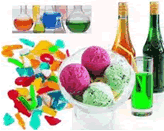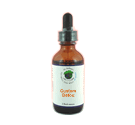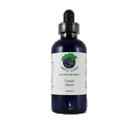 Arthropod/Vector
Bacteria
Chemicals
Fungus /Mold
/ Yeast Metals Parasites Virus Other Arthropod/Vector
Bacteria
Chemicals
Fungus /Mold
/ Yeast Metals Parasites Virus Other
|
Food Coloring
While most consumers are aware that food with bright or unnatural colors (children's cereals such as Froot Loops) likely contain food coloring, far fewer people know that seemingly "natural" foods such as oranges and salmon are sometimes also dyed to mask natural variations in color. Color variation in foods throughout the seasons and the effects of processing and storage often make color addition commercially advantageous to maintain the color expected or preferred by the consumer. New studies now point to synthetic preservatives and artificial coloring agents as aggravating ADD and ADHD symptoms, both in those affected by these disorders and in the general population. Several major studies show academic performance increased and disciplinary problems decreased in large non-ADD student populations when artificial ingredients, including artificial colors, were eliminated from school food programs. But we must wonder what other negative effects are being caused by these pretty colors. The food colors are known by E numbers that begin with a 1, such as E100 (turmeric) or E161b (lutein). The most common synthetic dyes used in food include:
The following dyes are only allowed by the FDA for specific limited applications (most people don't eat orange peels, but how many people eat hot dogs and sausage?):
Because of the concern of health risks related to chemical dyes, more natural dyes have been developed as seen below. Unfortunately, these are not quite as natural as the paints extracted by simple berries in the times of old. The extraction process has proven many of these ""natural" dyes to induce reactions from hives, to allergies to anaphylactic shock!
Because food dyes are generally safer to use than normal artists' dyes and pigments, some artists have used food coloring as a means of making pictures, especially in forms such as body-painting. Food colorings can be used to dye fabric, but are usually not wash-fast when used on cotton, hemp and other plant fibers. Some food dyes can be fixed on Nylon and animal fibers. Red food dye is often used as theatrical blood. Synthetic dyes may have excellent application in these areas, but they do not belong in the human body. Check the labels for the mentioned dyes, both natural and synthetic and do your best to avoid them. |
|



